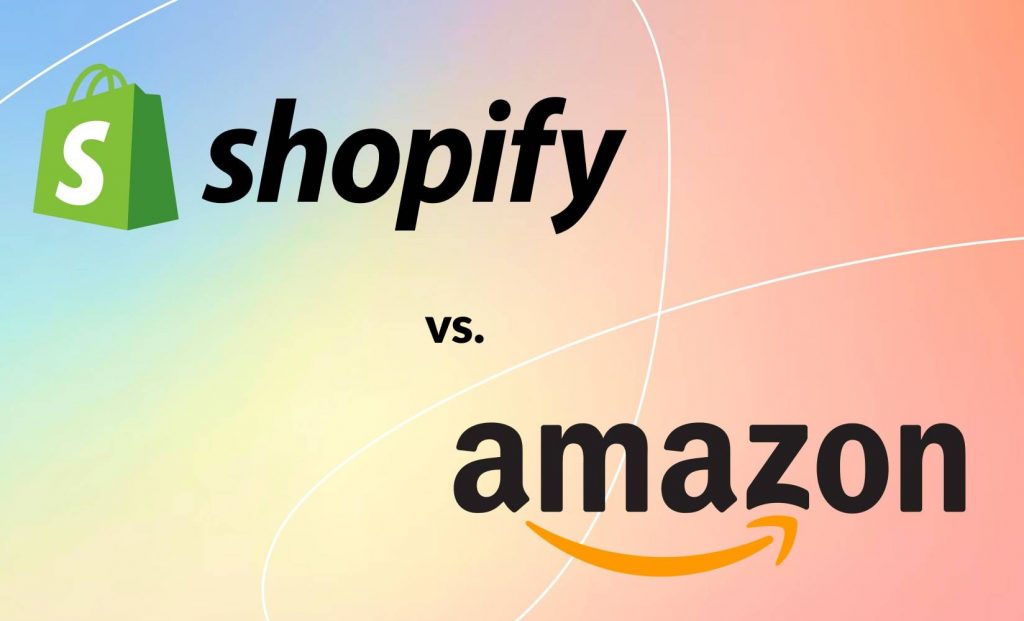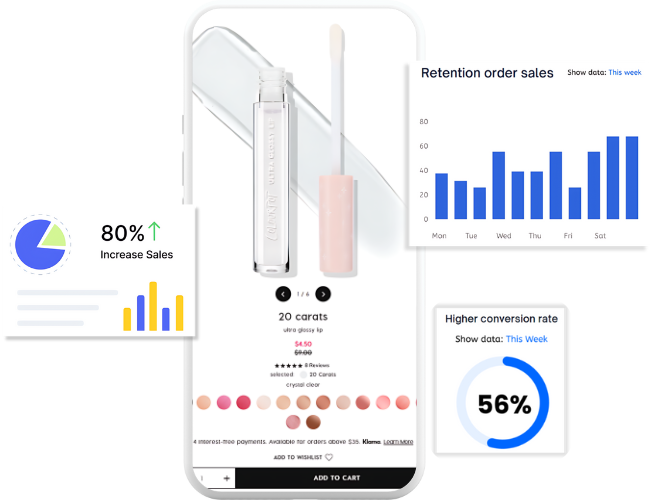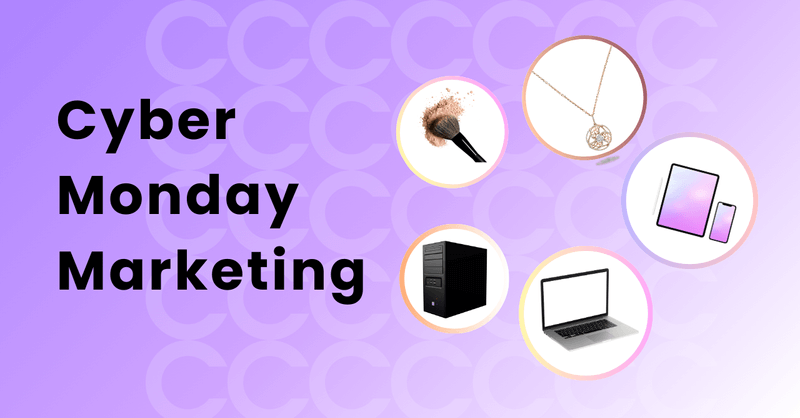Many merchants know that you can sell products on Amazon and Shopify, but they don’t really know the differences between these two platforms. Actually, Shopify and Amazon are quite different.
On this page, we will start with a brief overview of Shopify and Amazon, followed by the 9 main differences between them. After that, we summarize the pros and cons of both Shopify and Amazon from a merchant’s perspective. Hopefully, after reading this page, you will know more about Shopify and Amazon.

Shopify vs Amazon: An overview
Who is Shopify for?
Shopify is a powerful subscription-based e-commerce platform for businesses of any size to start, grow, manage and scale. On Shopify, merchants can build their brand and customize their storefronts to attract customers. Features relating to order management, inventory management, marketing, data analysis and third-party integrations empower Shopify to become one of the most popular e-commerce platforms.
Who is Amazon for?
Unlike Shopify, Amazon is an online marketplace. Amazon was founded in 1994 and has around 200 million active users. As Amazon is a marketplace, merchants are constantly competing against each other. Until now, many consumers’ go-to online shopping site is still Amazon. Amazon is well-known for its Fulfilment by Amazon (FBA) program which allows merchants to send their products to Amazon fulfilment centre. The products are stored, packed and distributed from the centre.
Shopify vs Amazon: the 9 main differences
To many consumers, Shopify and Amazon are basically the same. They purchase products by browsing the website and the products will be delivered to their door in a couple of days. However, from a merchant’s perspective, Shopify is very different to Amazon. In the following part of this section, we summarize 9 main differences between Shopify and Amazon.
Ease of use
Both Shopify and Amazon are very friendly to new users and are designed to be relatively simple to operate. They all provide an onboarding setup procedure that takes you through the initial setup step by step. Detailed instructions and videos of how to use various tools can be found on both Shopify and Amazon.
You do need to spend time learning how to operate on Shopify or Amazon. However, the learning curve on these two platforms is quite different. On Amazon, you have to be very familiar with the database ‘Amazon Seller Central’.
On Shopify, since you are creating a new website, you need to customize your storefront and add products to it. Apart from customizing your Shopify store, you can find all kinds of third-party applications to make your operation easier. Apps developed by Channelwill are designed to solve problems in managing a Shopify store.
E-commerce tools and apps
When operating an online store, you will need many different e-commerce tools and third-party applications to support your management. They save you time and prompt productivity, especially when your store has high traffic and a great number of transactions.
Both Shopify and Amazon have a wide range of features. Shopify even has an app store where you can download the tools that you need. Compared to Shopify, Amazon also has features catering to different needs, but the problem is that you can’t customize to the same degree as Shopify. Hence, it will be easier to stand out from all stores on Amazon.
Fulfillment and dropshipping
The fulfilment and drop-shipping methods are very different between Shopify and Amazon. As mentioned above, Amazon is famous for its fulfilment by the Amazon program. You send your inventory to the Amazon fulfilment centre and they will help you to store the products. When you receive an order, the centre will pack the product and ship it out. This way, you don’t need to worry about storing and sorting out shipments by yourself.
Amazon has another program, called fulfilment by merchant (FBM). You need to find logistics providers and leave the shipping operation to them. However, FBM sellers are often lagged behind FBA sellers as Amazon prioritise its own network.
Shopify offers two fulfilment methods for you to choose from. You can either deal with fulfilment via drop-shipping by yourself or use third-party logistic providers. As you are given full control over the shopping process and inventory management, you are responsible for your operation.
Pricing and fees
Shopify is a subscription-based platform, and the subscription fees depend on the plan you choose, ranging from $39 to $339. However, the subscription fee is not the only thing you pay because you are very likely to subscribe to some third-party applications integrated with Shopify to facilitate your operation. Apart from that, Shopify also charges a 3% payment processing fee on every transaction.
On Amazon, the subscription fees are much lower. The individual accounts are free of charge and even the subscription fee of a professional account costs only $39.99 a month. Some merchants would argue whether using an individual account is a good deal since you will be charged selling fees per item you sell. Apart from these, Amazon also charges fulfilment fees covering storage, packing and shipping.
Payment options
To have flexible payment options on Shopify, you need to use the integrated payment options, which allow your customers to pay via various payment methods. You will also have better control over the checkout process. Shopify also provides its own payment option, ‘Shopify Pay’. You will be charged a 3% processing fee if you are subscribed to a basic plan. If you want to lower the rate, you need to subscribe to a more expensive plan.
Amazon also has its Amazon Pay, which is very convenient once you have your payment information stored. The referral fees range from 2% to 10%, so it is quite heavy. Meanwhile, you will not able to customize your payment process like on Shopify.
Conversion rate optimization
As we mentioned many times, Shopify conversion rate optimization focuses on your storefront design, A/B testing and marketing. Merchants are encouraged to optimize every single process and leverage the power of social media and feedback to achieve a higher conversion rate.
Amazon’s conversion rate optimization emphasizes products with a standardized presentation, prioritizing reviews and maximizing the checkout experience.
Marketing and SEO
On Shopify, merchants have more control over the marketing and SEO strategy. There is also more autonomy in executing digital marketing campaigns. You can also use powerful third-party applications, such as SEOAnt by Channelwill that optimize keywords, improve your site structure seamlessly and drive more traffic into your store.
Conversely, Amazon’s SEO is more concentrated on optimizing product listings in the platform rather than in search engines. The rankings depend on the keywords, back-end search terms and product titles. The marketing campaign on Amazon emphasizes sponsored brands and goods.
Multichannel selling and in-person selling
Shopify is excellent in multichannel selling. Merchants can integrate Shopify with Amazon, eBay, Etsy and many other e-commerce platforms with the help of integration applications. You can find many integration applications on the Shopify app store. Shopify’s point of sale (POS) system backs in-person transactions, allowing merchants to unify sales from online stores and offline stores.
Amazon is an online marketplace, so there is not much in-person selling. Merchants can try out Amazon’s physical retail stores, but the sales are not going to be as promising as online selling. Additionally, unlike Shopify, Amazon offers limited multichannel selling.
Customer support
Both Shopify and Amazon provide excellent customer support. Shopify offers customer services through various channels, including 24/7 live chat box, email and hotline support. In addition, there are community forums that are held regularly to help merchants solve issues with their operations.
While Shopify’s customer support is more focused on sellers, Amazon prioritizes customer service for buyers. Amazon aims to provide a positive shopping experience. Amazon spent a huge amount of labour and money on handling inquiries from end consumers, which turned out to be great.
Shopify vs Amazon: Pros & Cons
Shopify
Pros: Shopify has a wide range of in-built e-commerce tools and third-party applications integrated with the platform. It provides merchants with a unique way to manage their online stores and offers consumers an excellent shopping experience.
Features such as abandoned cart recovery and AI text writer can not be found on other e-commerce platforms. Additionally, Shopify also offers the flexibility to design your storefront, which can not be done on Amazon. This functionality presents you with an opportunity to stand out from the crowd.
Cons: Due to the subscription-based nature, you are expecting to pay from $39 to $339 a month, which is relatively high compared to the subscription fees on other platforms. However, if you think you are clear with all the expenses after paying a subscription fee, you are very likely to be wrong. If you want to use the apps in the app store, you need to pay for them individually and monthly as well.
Amazon
Pros:You cannot find an e-commerce platform that has a larger global traffic than Amazon. Amazon, as one of the pioneers in the industry, owns millions of customers visiting their marketplace every month from over 100 countries.
Amazon’s fulfillment by Amazon program helps you to store, pack and ship your products, which lowers your risk and improves your managing efficiency. Even though you need to pay a monthly fee for the FBA service, it is still very worthwhile to do so.
Cons: If you are selling your products on Amazon, you should know that you are competing against millions of similar products. Sometimes it could be difficult to stand out from the crowd as a new player.
There are not as many tools that you can utilize on Amazon as Shopify. For instance, Amazon does not integrate with any shopping cart tools, which means if you sell your products in multiple channels, you will have to count the inventory by yourself.
Outro
Shopify and Amazon are great platforms to build your online business on. After reading this page, I believe you are very familiar with them and the differences between these two brilliant platforms.
You may have made up your mind on which platform you should use, or you wish to integrate both platforms to maximise your sales. If you need any help, Channel Will, an all-in-one e-commerce platform, can offer you professional suggestions and help you to operate your online business seamlessly.
FAQs About Shopify vs Amazon
Note: This blog was originally written in English and translated using an automated tool to make the content accessible to a global audience. We believe in sharing valuable insights with everyone and apologize for any inaccuracies. If you spot any errors, please feel free to contact us for corrections. Your feedback helps us improve and ensures the content’s value is fully realized.

Zero Tan
Content Specialist
As an eCommerce content creator, I aim to share insights, trends, and strategies that may help you navigate the digital marketplace more effectively. My content is designed to provide practical value and inspiration, supporting your business growth and helping you stay informed about industry developments.




